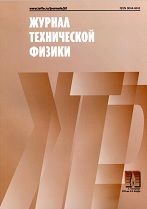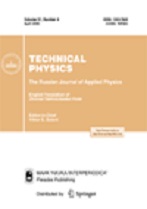|
This article is cited in 4 scientific papers (total in 4 papers)
Plasma
Dynamics of the spatial structure of a microsecond pulsed barrier discharge initiated in atmospheric pressure air in the point–plane geometry at different polarities of feed voltage
A. A. Tren'kin, K. I. Almazova, A. N. Belonogov, V. V. Borovkov, E. V. Gorelov, I. V. Morozov, S. Yu. Kharitonov
Federal State Unitary Enterprise "Russian Federal Nuclear Center — All-Russian Research Institute of Experimental Physics", Sarov, Nizhny Novgorod region
Abstract:
The evolution of a microsecond pulsed barrier discharge initiated in atmospheric pressure air in the point–plane electrode geometry has been investigated using streak camera photorecording and shadow photography with micrometer resolution and nanosecond exposure. It has been shown that the discharge develops in series and its structure evolves both within a series and from series to series. It has been found that, irrespective of the polarity of a feed voltage pulse, the discharge develops from the point electrode, having the form of a set of many micrometer-diameter channels. At the late stage, the discharge consists of a number of glowing microstructured channels, which occupy the space between the point and barrier and deviate from the point axis, and many faint channels radially propagating over the surface of the barrier. Numerical parameters of the structured have been obtained.
Keywords:
dielectric barrier discharge, shadow method, microchannel structure of the discharge.
Received: 02.07.2020
Revised: 01.09.2020
Accepted: 07.09.2020
Citation:
A. A. Tren'kin, K. I. Almazova, A. N. Belonogov, V. V. Borovkov, E. V. Gorelov, I. V. Morozov, S. Yu. Kharitonov, “Dynamics of the spatial structure of a microsecond pulsed barrier discharge initiated in atmospheric pressure air in the point–plane geometry at different polarities of feed voltage”, Zhurnal Tekhnicheskoi Fiziki, 91:2 (2021), 255–261; Tech. Phys., 66:2 (2021), 243–249
Linking options:
https://www.mathnet.ru/eng/jtf5077 https://www.mathnet.ru/eng/jtf/v91/i2/p255
|


| Statistics & downloads: |
| Abstract page: | 75 | | Full-text PDF : | 41 |
|





 Contact us:
Contact us: Terms of Use
Terms of Use
 Registration to the website
Registration to the website Logotypes
Logotypes








 Citation in format
Citation in format 
